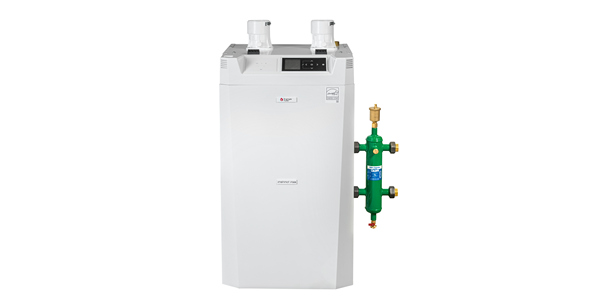Reduce the risk of unexpected costs and inefficiencies
As facility managers are seeing an increase in responsibilities and tasks while navigating the global pandemic, the following best practices serve as a reminder that proper chiller maintenance and cleaning should still be a priority on their to-do lists.
A benefit of performing chiller cleaning and maintenance at the end of the cooling season is that any larger issues or concerns can be identified early. It provides more time to find a solution before the chiller will be back up and running.
“Facilities will see many benefits from properly cleaning the chiller system, with one of the largest being avoiding any unnecessary expenses from repairs or additional operating expenses,” says Tim Kane, president of Goodway Technologies, a company that provides maintenance solutions for a wide variety of industries, including commercial HVAC. “Increased efficiency is a close second, and with many buildings and facilities having an eye on their costs, it’s more important than ever to clean large HVAC systems like chillers.”
Since chillers are one of the largest operational expenses for a facility’s HVAC system, deferred maintenance can lead to increased energy expenses due to inefficient operation, as well as further costs associated with additional repair and lost production time. After maintenance, it’s a good idea to measure efficiency gains, which can reveal important information, including costs saved as a result of regular maintenance. A proper operating log is vital to help identify areas that show improvement following chiller maintenance.
The four steps to help ensure a chiller system sees optimal performance include:
- Step 1: Maintain a Daily Operating Log
The Federal Energy Management Program recommends updating the daily operating log four times a day to monitor key operating parameters that will help indicate if any problems are developing. If four times is too much, make sure it’s at least once a day. The data it shows will be invaluable.
- Step 2: Keep Tubes Clean
Fouling and scale can reduce efficiency. Goodway Technologies offers a chiller fouling calculator to estimate how much money is being expended due to the presence of scale in chillers. For example, a 500 ton chiller with a moderate amount of scale deposit (0.012”) can cost an additional $7,020. Regular monitoring can help recognize when cleaning should take place, however it is recommended at least once a year. Pressure loss can also indicate tube corrosion.
- Step 3: Ensure a Leak-Free Unit
Leaks can affect the efficiency and operation of the system while releasing hazardous refrigerants. Refrigerant levels should stay within the manufacturer’s recommended levels. An air-purge timer (increases in air-purge time may indicate a leak), checking the refrigerant sight-glass for bubbles and checking at all joints and connections with a gas analyzer are all ways to help track refrigerant levels.
- Step 4: Sustain Proper Water Treatment
Between cleanings, it is important to implement a water treatment program. Water treatment helps to reduce – but not fully eliminate – the buildup of contaminants on heat-transfer surfaces that can lead to loss of efficiency and also lead to the growth of harmful bacteria. Each facility is different, so it is important to speak with an expert resource to identify a proper water treatment program.
Don’t forget about cooling towers
If a chiller system has a cooling tower, keep in mind the cooling tower can have a big impact on efficiency. It also poses a potential health risk if not maintained. When ignored, the warm water in cooling towers can promote algae growth, and flash evaporation can produce hard scale deposits or calcium fouling. Cooling tower fill acts like a massive air scrubber, coming into contact with dust, pollen and insects, which contribute to bacteria growth. This creates a breeding ground for bacteria, such as legionella. Like chillers, regularly cleaning cooling towers can decrease the chances of equipment corrosion or breakdowns and can increase plant efficiency.



